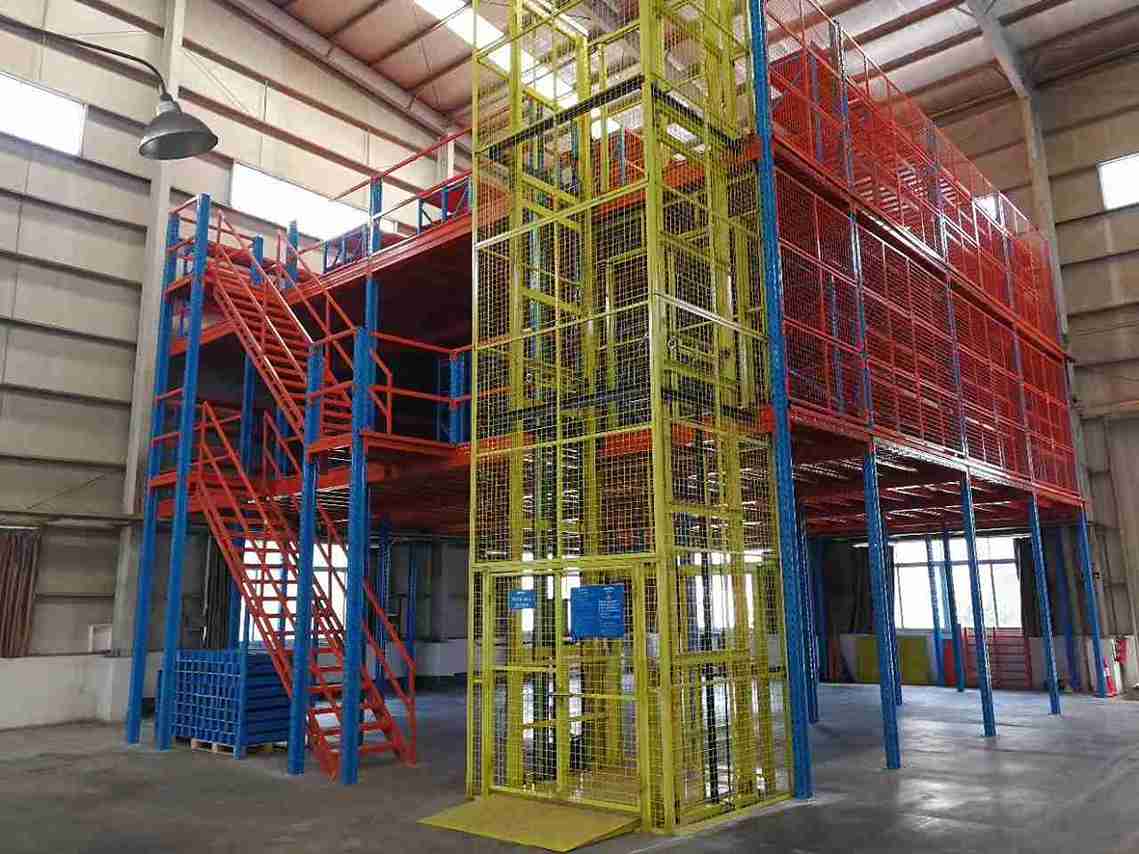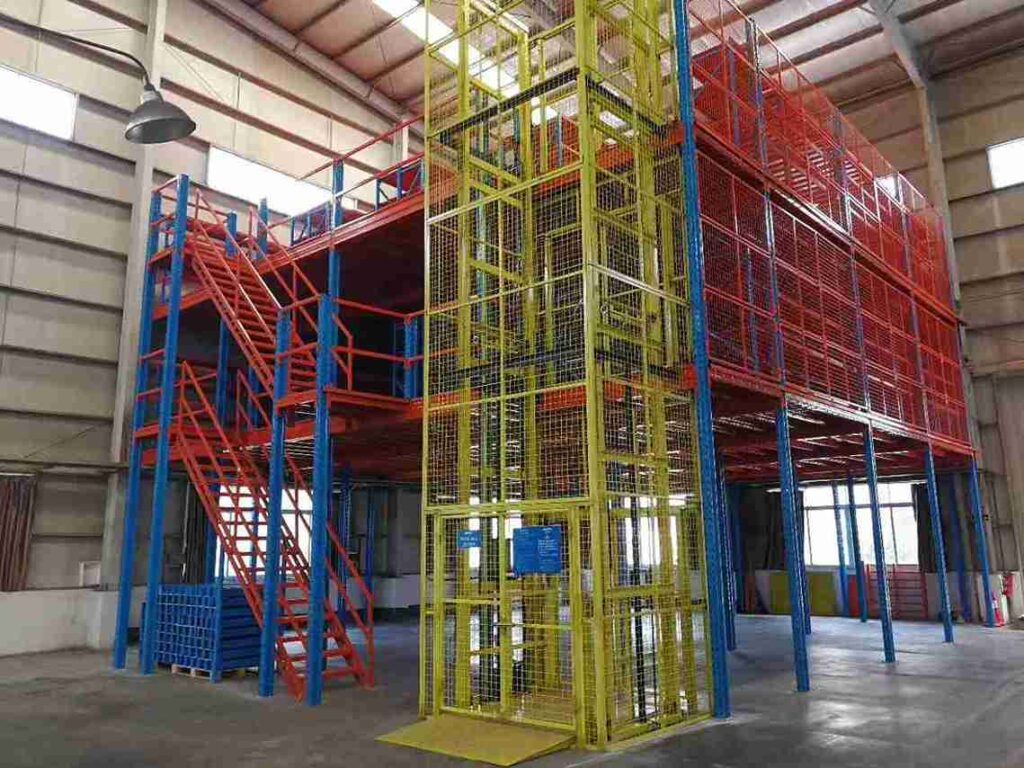📐 "First 50 Enterprise Queries Get Custom 3D Warehouse Design" Plan

Introduction: The Critical Role of Industrial Racking Systems in Modern Warehousing
In an era where warehouse efficiency directly impacts profitability, industrial racking systems have become the backbone of optimized storage solutions. These systems are not just metal frameworks—they are precision-engineered structures designed to maximize storage density, improve workflow, and enhance safety in high-demand environments.
For logistics managers, warehouse operators, and procurement specialists, selecting the right industrial racking system can mean the difference between a chaotic storage facility and a seamlessly organized operation. This guide dives deep into the best industrial racking systems available today, their unique advantages, and how businesses can leverage them to boost storage capacity, streamline operations, and reduce costs.

1. Why Industrial Racking Systems Are Essential for Modern Warehouses
1.1 The Growing Demand for Efficient Storage Solutions
With global e-commerce sales projected to exceed $7 trillion by 2025, warehouses face unprecedented pressure to store more goods in less space. Industrial racking systems provide the structural foundation for high-density storage, allowing businesses to utilize vertical space rather than expanding their physical footprint.
1.2 Key Benefits of High-Quality Industrial Racking Systems
-
Space Optimization – By leveraging vertical storage, warehouses can increase capacity by up to 300% without expanding.
-
Enhanced Accessibility – Well-designed industrial racking systems allow for faster picking and reduced labor costs.
-
Improved Safety – Properly installed racks minimize the risk of collapses, forklift accidents, and worker injuries.
-
Scalability – Modular designs enable businesses to expand storage as inventory grows.
2. The Top Industrial Racking Systems for Every Storage Need
2.1 Selective Pallet Racking – The Industry Standard
Selective pallet racking is the most widely used industrial racking system, offering direct access to every pallet. It’s ideal for warehouses with high inventory turnover and diverse SKUs.
Key Features:
-
Roll-Formed Racking – Lightweight, cost-effective, and easy to install.
-
Structural Racking – Heavy-duty welded frames for extreme load capacities (up to 30,000 lbs per bay).
Best For: Retail distribution centers, food and beverage storage, and third-party logistics (3PL) providers.
2.2 Drive-In & Drive-Through Racking – High-Density Storage Solutions
For businesses storing large quantities of homogeneous products, drive-in and drive-through industrial racking systems offer unmatched storage density.
Key Differences:
-
Drive-In Racking (LIFO System) – Forklifts drive directly into storage lanes, ideal for long-term bulk storage.
-
Drive-Through Racking (FIFO System) – Allows access from both ends, perfect for perishable goods and batch tracking.
Best For: Cold storage facilities, beverage distributors, and automotive parts warehouses.
2.3 Push-Back Racking – Dynamic Storage for Medium-High Turnover
Push-back racking systems use a gravity-fed cart system that allows pallets to be stored deeper than traditional racks.
Advantages:
-
Higher Storage Density – Up to 75% more pallet positions compared to selective racking.
-
Improved Accessibility – Pallets slide forward when retrieved, reducing forklift travel time.
Best For: Manufacturing warehouses, wholesale distributors, and retail fulfillment centers.
2.4 Cantilever Racking – The Best Choice for Long, Bulky Items
Unlike traditional industrial racking systems, cantilever racks feature open-front designs with no vertical obstructions.
Ideal Uses:
-
Steel bars, lumber, pipes, and furniture storage.
-
Tire warehouses and construction material storage.
Best For: Steel suppliers, lumber yards, and industrial manufacturers.
2.5 Mezzanine Racking – Double Your Storage Without Expansion
Mezzanine racking systems create elevated storage platforms, effectively doubling usable space without requiring a larger facility.
Applications:
-
Additional shelving or pallet storage above ground level.
-
Office spaces or assembly areas within warehouses.
Best For: Warehouses with high ceilings and limited floor space.
3. How to Choose the Best Industrial Racking System for Your Business
3.1 Analyzing Warehouse Requirements
Before selecting an industrial racking system, businesses must assess:
-
Inventory type (pallets, cartons, long materials).
-
Turnover speed (daily picking vs. long-term storage).
-
Forklift accessibility (narrow aisles vs. wide lanes).
3.2 Load Capacity & Durability Considerations
-
Light-Duty Racking (Up to 2,000 lbs/shelf) – Best for small parts storage.
-
Medium-Duty Racking (2,000–5,000 lbs/shelf) – Ideal for retail distribution.
-
Heavy-Duty Racking (5,000+ lbs/shelf) – Required for steel, machinery, and automotive storage.
3.3 Material Selection: Steel vs. Wire Shelving
-
Steel Racking – Highest durability, corrosion-resistant coatings for harsh environments.
-
Wire Shelving – Lightweight, ideal for small parts organization.
4. Leading Manufacturers of Industrial Racking Systems
When investing in industrial racking systems, choosing a reputable manufacturer ensures long-term reliability and safety.
Top Brands in the Market:
-
Unarco – Specializes in selective pallet racking and drive-in systems.
-
Ridg-U-Rak – Industry leader in cantilever racking solutions.
-
Steel King – Known for heavy-duty structural racking.
-
Mecalux – Innovators in automated storage systems (AS/RS).
5. Installation & Safety Best Practices for Industrial Racking Systems
5.1 Professional Installation vs. DIY Setup
While some light-duty industrial racking systems can be self-assembled, heavy-duty pallet racking requires professional installation to ensure:
-
Proper weight distribution.
-
Seismic and OSHA compliance.
5.2 Routine Maintenance & Inspection Checklist
-
Monthly inspections for bent beams, loose bolts, and corrosion.
-
Annual load capacity reassessment as inventory needs change.
6. The Future of Industrial Racking Systems: Automation & AI Integration
6.1 Automated Storage & Retrieval Systems (AS/RS)
The next evolution of industrial racking systems includes robotic pallet shuttles and automated cranes, reducing labor costs by up to 70%.
6.2 AI-Powered Warehouse Optimization
Emerging technologies use machine learning to:
-
Predict optimal storage layouts.
-
Automate inventory replenishment.
Conclusion: Investing in the Right Industrial Racking System Boosts Efficiency & Profitability
Selecting the best industrial racking system is a strategic decision that impacts warehouse efficiency, safety, and scalability. Whether a business needs high-density drive-in racks, versatile selective pallet racks, or specialized cantilever systems, the right solution exists.
By partnering with reputable manufacturers and installers, companies can future-proof their storage infrastructure and stay competitive in an increasingly demanding logistics landscape.
FAQs: Expert Answers on Industrial Racking Systems
1. How do I determine the right industrial racking system for my warehouse?
Consider inventory type, turnover rate, and forklift access needs. A storage consultant can perform a space analysis to recommend the best system.
2. What’s the average cost of industrial racking systems?
Prices range from $50 per pallet position (selective racking) to $200+ (drive-in systems). Heavy-duty structural racking can exceed $500 per bay.
3. Can industrial racking systems be reconfigured later?
Yes, most selective and push-back racking systems are modular, allowing for easy reconfiguration as needs change.
4. Are there fire safety regulations for industrial racking?
Yes, warehouses must comply with NFPA and OSHA standards, including clear aisle widths and fire suppression systems.
5. How long do industrial racking systems last?
With proper maintenance, steel racking systems can last 30+ years, while lighter systems may need replacement after 10–15 years.




